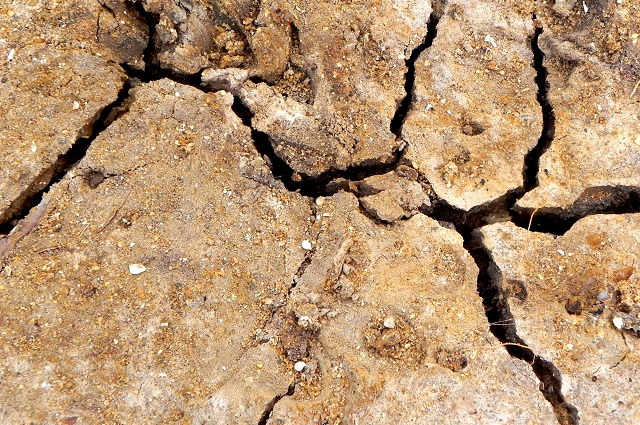News Story
(Below is a backup copy of the original article with as much credit to the publisher as well as the author that we can provide. By no means do we mean to violate any copyright laws. This page is appearing because someone indicated that the original story was unavailable.)
FDA issues warning for oyster eaters in at least 13 states over a norovirus outbreak
A norovirus outbreak linked to raw oysters has come south from Canada. Here’s what’s known and what you need to know: HOW MANY PEOPLE HAVE BEEN INFECTED? Monday’s U.S. estimate from the Centers for Disease Control and Prevention is 91. The CDC doesn’t have a state breakdown yet, but as first reported by food safety law firm Marler Clark, the state of California knows of 34 illnesses, Minnesota knows of 29 and Washington knows of 18. TOP VIDEOS × The Public Health Agency of Canada counts 279 people with either norovirus or some type of stomach problem linked to eating the oysters from British Columbia. The CDC doesn’t have a state breakdown yet, but Public Health Canada says 262 of its illnesses are in British Columbia, 15 are in Ontario, with Alberta and Saskatchewan having one each. WHAT’S TO KNOW ABOUT THE FOODBORNE ILLNESS NOROVIRUS? $2 for 2 months Subscribe for unlimited access to our website, app, eEdition and more CLAIM OFFER The Centers for Disease Control and Prevention says each year norovirus causes about 900 deaths, usually among those 65 and older; 109,000 hospitalizations; and 465,000 emergency room visits, mostly from children. “Norovirus is the leading cause of vomiting and diarrhea from acute gastroenteritis (inflammation of the stomach and intestines) among people of all ages in the United States,” the CDC says. Norovirus symptoms usually hit 12 hours to two days after infection and hang around for one to three days. The symptoms include nausea, stomachaches and, as mentioned above, vomiting and diarrhea, which can leave a person dehydrated. A norovirus contamination can be odorless. READ NEXT RECALLS Star Wars The Mandalorian (carcinogen) & Mickey Mouse (methanol) hand sanitizers recalled APRIL 03, 2022 10:28 AM Monday Bites The latest on Miami food culture, restaurant openings and inspection reports, in your inbox every Monday afternoon. SIGN UP This site is protected by reCAPTCHA and the Google Privacy Policy and Terms of Service apply. WHAT OYSTERS ARE THE PROBLEM? The FDA, state agencies and the Public Health Agency of Canada have traced the oysters ferrying norovirus into the United States to the south and central parts of Baynes Sound in the western Canadian province of British Columbia. Canadian authorities posted oyster recalls on Feb. 18, March 20 and 23 and twice on March 27. The FDA warning to restaurants and retailers fingers raw oysters from harvest location Nos. 1407063, 1411206, 278737 in BC 14-8 and BC 14-15’s No. 1400036, in BC 14-15. Product tags will have “14-8”and/or “DEEP BAY”, or “14-15.” The oysters went to restaurants and seafood sellers in Florida, New York, California, Texas, Colorado, Hawaii, Illinois, Massachusetts, Minnesota, New Jersey, Nevada, Oregon and Washington. But the FDA also warns, “It is possible that additional states received these oysters through further distribution...” READ NEXT RECALLS Why packing animal crackers in cheese cracker boxes can be a ‘life-threatening’ mistake APRIL 04, 2022 7:50 AM WHAT SHOULD YOU DO? In addition to not eating any raw oysters if you know or think they might be from the above locations, practice common sense food safety and cleanliness. ▪ Clean and disinfect any surfaces that came into contact with the oysters — utensils, countertops, cookware, refrigerator shelves or drawers. This is also a good policy when dealing with chicken to protect against salmonella. ▪ Wash your hands often with hot water and soap before and after handling food. Yes, this might mean you wash your hands several times while making a meal. Think of the time spent washing your hands as time not spent vomiting or with the runs (or hearing the play-by-play on that from someone you fed). ▪ Wash your utensils and surfaces with hot water and soap after each round of food preparation. No using the same cutting board for slicing seafood then for chopping broccoli. This is why cutting boards often come in sets. ▪ This is also where your dishwasher comes in handy — it’s not just for drying dishes and storing books — and, no, you can’t fully replicate the dishwasher’s 150 to 180-degree Fahrenheit (65.6 to 82.2 Celsius) sanitizing cycle by hand scrubbing in your home sink. ▪ “It is also important to be aware that noroviruses are relatively resistant to heat. They can survive temperatures as high as 145 degrees Fahrenheit, 62.8 Celsius),” the FDA warns. “Quick steaming processes that are often used for cooking shellfish may not heat foods enough to kill noroviruses.”
Read more at: https://www.miamiherald.com/entertainment/restaurants/article260105105.html#storylink=cpy

